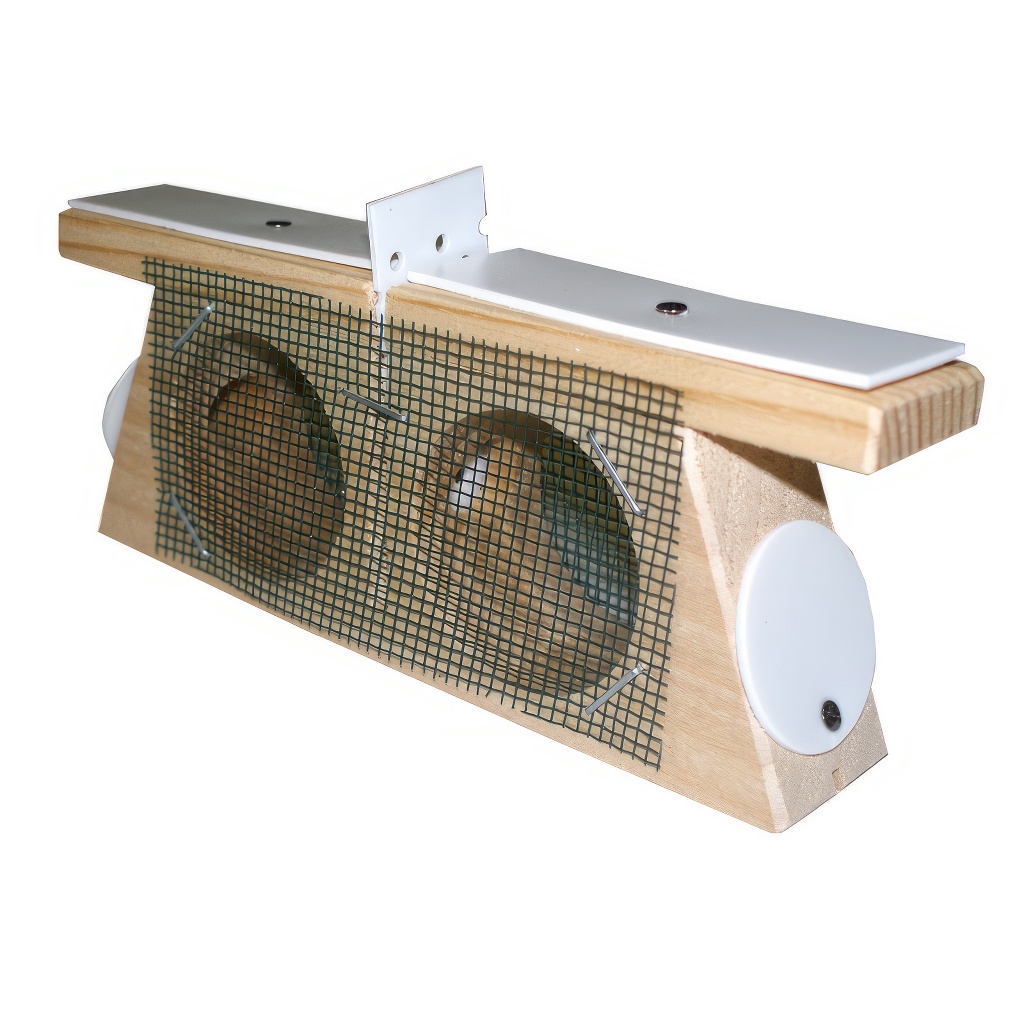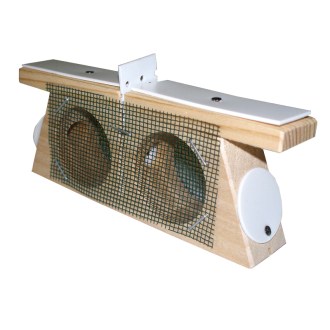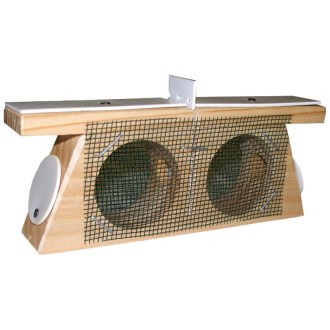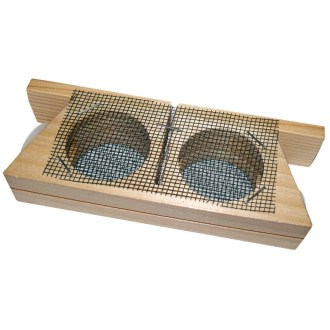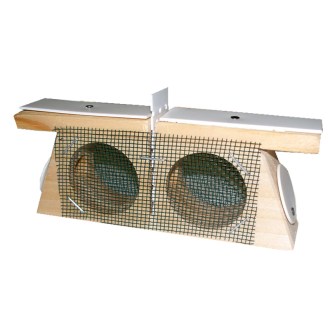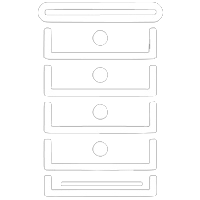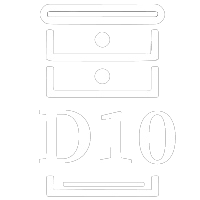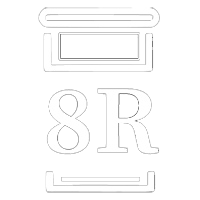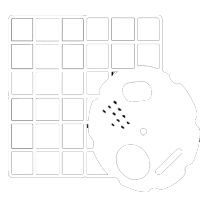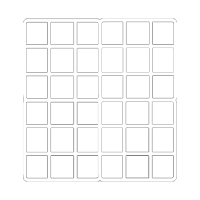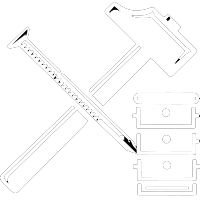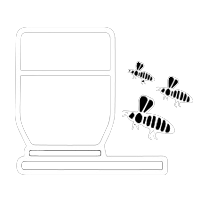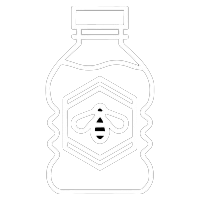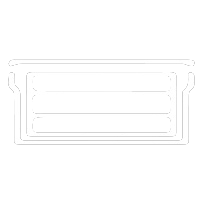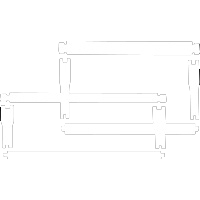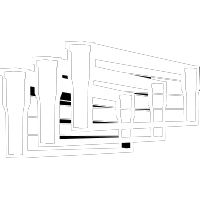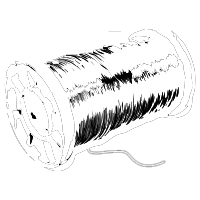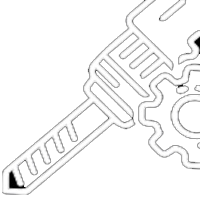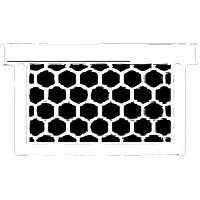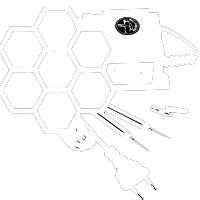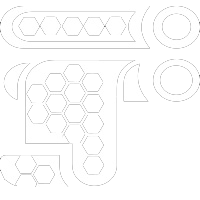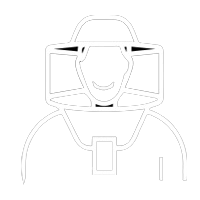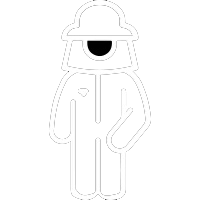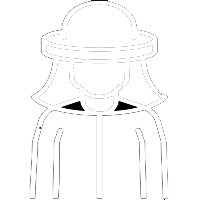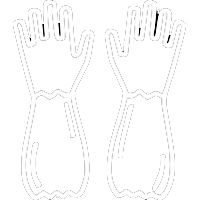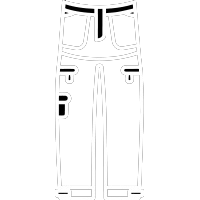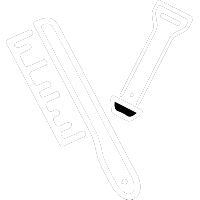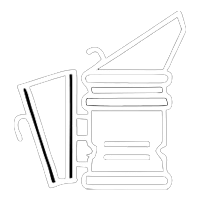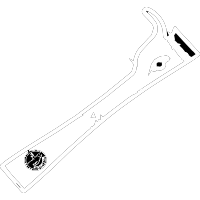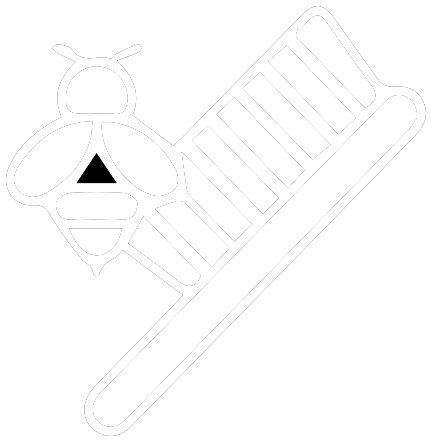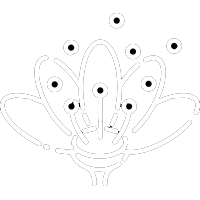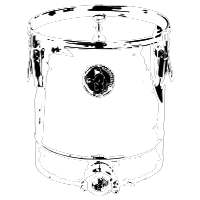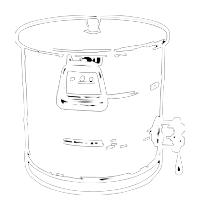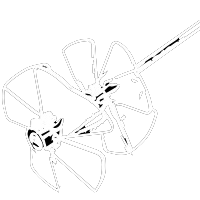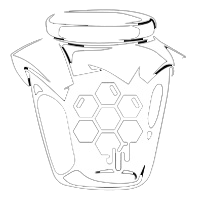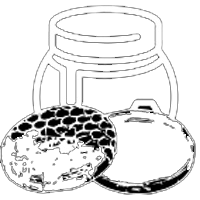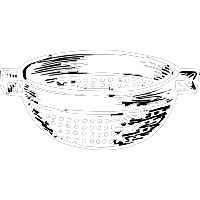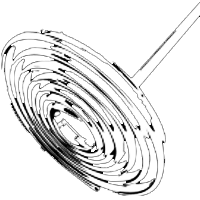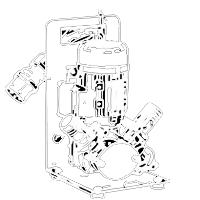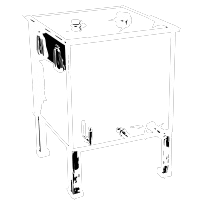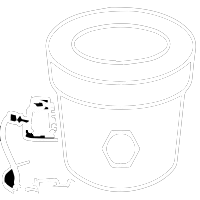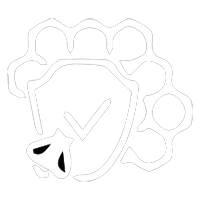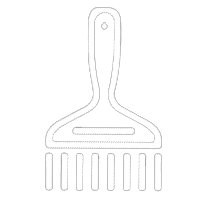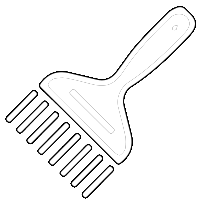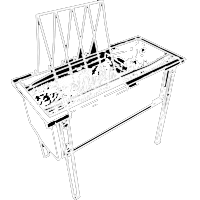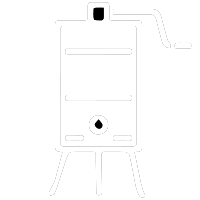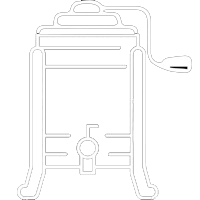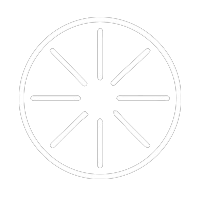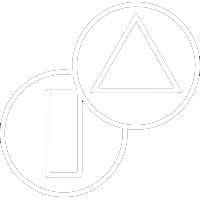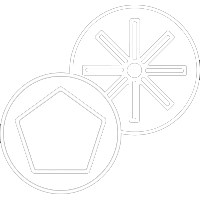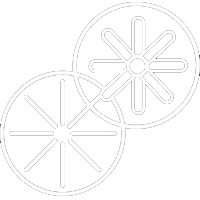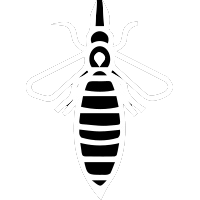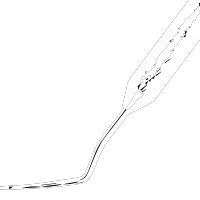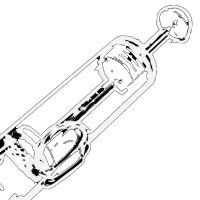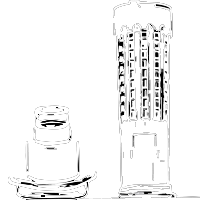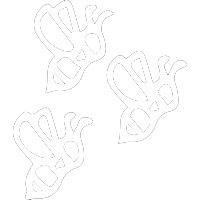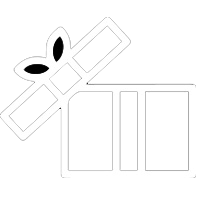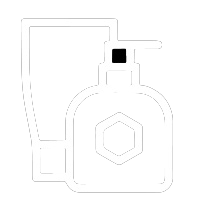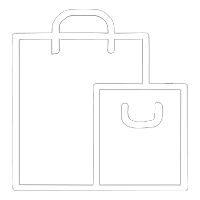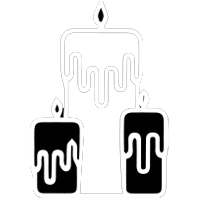Double wooden queen introduction cage
Double wooden queen introduction cage
Classical beehive double attachment cage. A wooden cage is intended
for the queen when applying the method of temporarily leaving the old queen in
the beehive. The standard double cage is enriched with two circular holes that
are covered with wire mesh. Both parts of the cage are separated by plastic foil.
From the side are the attachment cages designed to hold the queen, with the old
queen beehive being inserted into one part of the cage and the other part for
the new queen. As a rule, the queen bee cares after one day and removes the cage
dividing the cage. This creates more room for the queen, leaving the old queen
in the cage. So the new Queen will be better accepted by the beehive.
Queen exchange in the colonies begins by removing the old queen, followed by the
addition of a new queen. The honeybee laborers where you want to embed a new
mother will initially try to kill the new queen because they will treat her as a
strange bee. The adoption of a new bee queen then depends on the proportions in
the beehive. Younger queen bees receive more willingly than elder bees. Smaller
groups of queen bees also receive better than larger groups. The queen accepts
her queen better when she is just as old. The colony reluctantly accepts her
mother during the robbery period, but she willingly accepts her at the time of
the snatch. Beekeepers are usually scheduled to exchange queen for a period of
frogs, that is, spring or autumn. Workers will not accept a new queen if the old
queen is present in the beehive, so it is necessary first to remove the old
queen. If they are in a colonnade, they must be properly inspected for removal
because they could run out of a new queen. The addition cage is therefore a
standard tool when adding a queen. The holes in the cage can be sealed with
honey dough.
A queen with a queen is most often placed on the upper meadow of the fetal bosom.
But you need to make sure that bees have a good access to the queen, so they can
move around the key. The honey bees roam the honey and bring the queen out of
the cage. This process typically takes two to three days. During that time, bees
are preparing to receive a new queen. Once the queen arrives in the beehive, a
foreign smell comes out of the cage and the bees respond to the cage as they
react to a foreign queen. They begin to create a clutch around the stick. This
is manifested by the fact that they bang into the net of the cage and turn their
asses in the kelp as if they want to score it. At first, the bees are kneaded
into a sturdy spoon, so it is difficult to tear them off the cage. Gradually,
however, the blister dissolves.
Dimensions: 13 x 5 cm.
Reviews
There are yet no reviews for this product.
Please log in to write a review. Log in

